
In the opening pages of her influential autobiography, Recollections of My Life as a Woman, beat poet Diane Di Prima remembers how she came to forge her young identity, her understanding not just of gender, but of her gender, through her grandmother’s warm influence embroiled in the tempestuous 1930s:
My earliest sense of what it means to be a woman was learned from my grandmother, Antoinette Mallozi, and her knee […] my grandmother taught me that the things of woman go on: that they are the very basis and ground of human life. Babies are born and raised, the food is cooked. The world is cleaned and mended and kept in order. Kept sane. That one could live with dignity and joy even in poverty. That even tragedy and shock and loss require this basis of loving attendance. And that men were peripheral to all this. They were dear, they brought excitement, they sought to bring change. Printed newspapers, made speeches, tried to bring that taste of sanity and order into the larger world. But they were fragile somehow. In their excitement they would forget to watch the clock and turn off the oven. I grew up thinking them a luxury.1
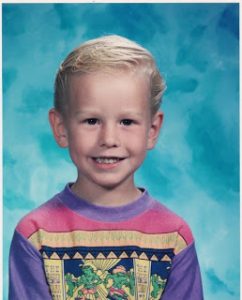 I preface with this excerpt because I believe it beautifully illustrates the intimate, deeply personal paths we travel in the formation of our identities — how we must inevitably find our own way even with the guidance of both our influences and our cultural contexts. In my early childhood, I don’t remember understanding gender and supposed gender roles quite as clearly as Di Prima. While I may have been exposed to the concept of girly, I would not have thought to apply it to myself. Put a football, a GI Joe, an Easy Bake Oven, and a train set in front of a childhood me, and you might as well sit yourself down, put your feet up and enjoy the brown, gooey concoction I attempt to prepare for you with the baking power of a light bulb and a little bit of sass. Eventually, though, learning that I was girly did come — also that I had really big ears.
I preface with this excerpt because I believe it beautifully illustrates the intimate, deeply personal paths we travel in the formation of our identities — how we must inevitably find our own way even with the guidance of both our influences and our cultural contexts. In my early childhood, I don’t remember understanding gender and supposed gender roles quite as clearly as Di Prima. While I may have been exposed to the concept of girly, I would not have thought to apply it to myself. Put a football, a GI Joe, an Easy Bake Oven, and a train set in front of a childhood me, and you might as well sit yourself down, put your feet up and enjoy the brown, gooey concoction I attempt to prepare for you with the baking power of a light bulb and a little bit of sass. Eventually, though, learning that I was girly did come — also that I had really big ears.
Much like the early adult-oriented feminist scholarship that privileged womanhood over girlhood,2 queer theory often distances itself from youth-centric study, especially in its exclusion of first-hand accounts during youth, something that Mary L. Gray attributes to society’s combined homophobia and ageism. “[…] a fearful adult queer community builds distance between itself and youth, particularly those questioning their sexuality; add this to our society’s ever-present attitude that the experiences of youth are less than real.”3
Combined with this moral panic, first-hand accounts are difficult to access given the small percentage of youth willing or able to identify themselves as queer or questioning, skewing data to account mostly for those growing up in more supportive, urban environments with plenty of resources to turn to in times of trouble. My intention with this essay, is to explore the media’s potential influence (for better or worse) on rural queer youth by necessarily recollecting my own closeted childhood in ethnographical form and by conducting interviews with peers from my hometown who shaped my contextual environment and the person I’ve become. Our memories are crucial for this particular paper, because, as Lynn Spigel and Henry Jenkins have noted, “Unlike academic history, popular memory is integral to everyday experience, it is memory for the public, and understood as being contingent and open rather than definitive and closed. […] it’s grounded in notions of personal identity.”4 For alienated queer youth, especially in rural America, media, particularly TV, can be the major foundation on which to build that identity.
I was born in the heart of the 80s into a middle-class farming family in rural, secluded Northwest Kanas. The generations of my family were widely stretched with a grandfather born before the first World War and married during the depression, and his father, a German immigrant who had stowed away, as old as the American Civil War. My parents were among the first baby-boomers and started their family in the early 70s with the birth of my eldest sibling, my brother Darren, in 1973, followed by my sister Shelly in 1976, after which, deciding the family was complete, my mother underwent tubal ligation surgery.
In October of 1981, at just seven years old, Darren suffocated in a tragic grain accident, my father discovering his body in the trailer of a truck filled with corn near the family farm, leaving my parents and sister devastated. The tremendous loss fully affected the unit, and drove them to seek alternatives for extending the family. They discovered Dr. Sherman Silber, of St. Louis, who was pioneering “miracle” infertility treatments5 and was able to successfully reverse my mother’s earlier operation, enabling my parents to give birth to two more children, my sister Lacey in 1983 and me in 1986. Darren’s death was always central to my understanding of my life, because my parents continually told Lacey and I that we would not have been born had he not died. That we had had a purpose, some purpose to come to be — there’s a lot of pressure in believing that.
losFor the first few years of my life, we stayed on the family farm, some thirty miles away from the nearest small town, Colby. Back in those days, if you wanted to watch TV, you had to construct a tall TV tower just to pick up two channels, which I remember now to be NBC and CBS, and on a particularly clear day, ABC. Much of the media I consumed in the first few years of my life, then, was whatever was playing on those stations. In the effort to provide us with as much youth-oriented media as possible, my mother recorded three or four made-for-TV or TV-re-aired family movies, Mary Martin’s Peter Pan, CBS’ Alice in Wonderland (with Carol Channing who was AWESOME, who a childhood me thought was Joan Rivers!), and Baby: Secret of the Lost Legend.
Each of these movies was fantasy, the first two constructing other worlds and the third taking place in exotic Africa, where secret dinosaur-like creatures dwelled. All three provided us with an escape, a place to go to get away from the seclusion of farm-life – promises of a bigger, brighter, more colorful world on the other side of the field. I remember being drawn more particularly to these movies than either of my sisters who, being older, preferred to be more active and outdoorsy than I. My disillusionment with farm life eventually came to concern my parents, especially because my brother had been so interested in going with my father everyday to work. This continual feeling of detachment from my family, especially from my father, shaped much of my childhood, and I remember feeling like a failure for drifting away from him so much when I knew he and my brother had been so close.
We did eventually move into town in the early 90s, and with the move came a crystal-clear new line-up of Television programming, easier access to music, and a plethora of new VHS tapes. The types of Television shows and movies I tended toward were almost always female-oriented, usually with a girl lead character who was empowered, if struggling, to make her own decisions. The Little Mermaid, Clarissa Explains it All, The Torkelsons and later The Secret World of Alex Mack and The Mystery Files of Shelby Woo.
These programs were especially important to me because I could pretend it was me narrating — I could pretend I belonged. I could see myself in the episodic, goof-ball situations which the characters navigated with ease. I would fantasize about my magical powers, hone my detective skills, dream of my rescue by Prince Charming, and practice writing in my diary. I stole my mother’s lipstick and false fingernails and dressed myself up, had full conversations with “…the man in the moon…” and played with my sister’s toys, ignoring the armory of model farm tractors and combines and cars gathered for me by my parents.
Fittingly, when I surveyed 20 of my former peers for this paper, seven of them identifying as gay or lesbian and the rest as straight, our favorite shows from childhood were matched queer/cross-gender — that is to say that, queer girls tended to select the same shows as straight boys while queer boys selected the same shows privileged by straight girls.
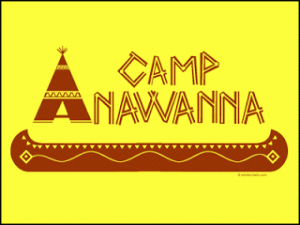 The first group preferred Television with male leads, outdoorsy themes, or macho plot devices, like Doug, Salute Your Shorts, The Fresh Prince of Bel-Air, Teenage Mutant Ninja Turtles, and Home Improvement. The second opted for gimmicky shows, fantastical cartoons and programs with more female characters, such as Gummy Bears, My Little Pony, Full House, Clarissa Explains it All, and The Torkelsons. Saved by the Bell and Rugrats, with their all-inclusive, ensemble casts, were the only overlapping choices from both groups as they represented both the realistic and fantastical worlds of troubled youth for both genders.
The first group preferred Television with male leads, outdoorsy themes, or macho plot devices, like Doug, Salute Your Shorts, The Fresh Prince of Bel-Air, Teenage Mutant Ninja Turtles, and Home Improvement. The second opted for gimmicky shows, fantastical cartoons and programs with more female characters, such as Gummy Bears, My Little Pony, Full House, Clarissa Explains it All, and The Torkelsons. Saved by the Bell and Rugrats, with their all-inclusive, ensemble casts, were the only overlapping choices from both groups as they represented both the realistic and fantastical worlds of troubled youth for both genders.
One respondent, who identifies as a gay male, explained how his media choices were most reflective of a life outside his “traumatic childhood”:
Recently I’ve actually been pretty reflective in this capacity — about the various manifestations of escapism I employed as a means of correction, redemption, or to find sanctuary. And so, quite simply, I was drawn to programs in which the daily world was most unlike my own. So, Clarissa Explains it All [which] featured a very bright, capable, if somewhat hapless young person (in brightly colored clothes and accessories) in an environment that was, finally, entirely supportive, stable, and safe. She might agonize histrionically about any number of crises, but by the end of the show, she was OKAY. She was FINE. She had made it through.
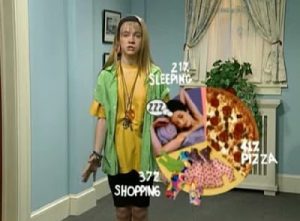 For him, Clarissa, featured a character with unlimited agency, supportive and understanding parents, a “[…] Romeo who helps himself in and out of [her] bedroom window”, and a killer fashion sense. In her article, “Girl Watchers — Patty Duke and Teen TV,” Moya Luckett suggests that, historically, when teenage audiences are the most elusive and groups or ideas are “unrepresentable,” teens turn to gimmicky shows with a “deliberate emphasis on fantasy and displacement”6 like Clarissa, that verily did avoid a realistic depiction of life, especially for gay boys in rural America. For me, however, Clarissa was not a strong enough gimmick, and so I turned to shows from the past featuring outlandish premises not popular among my generation.
For him, Clarissa, featured a character with unlimited agency, supportive and understanding parents, a “[…] Romeo who helps himself in and out of [her] bedroom window”, and a killer fashion sense. In her article, “Girl Watchers — Patty Duke and Teen TV,” Moya Luckett suggests that, historically, when teenage audiences are the most elusive and groups or ideas are “unrepresentable,” teens turn to gimmicky shows with a “deliberate emphasis on fantasy and displacement”6 like Clarissa, that verily did avoid a realistic depiction of life, especially for gay boys in rural America. For me, however, Clarissa was not a strong enough gimmick, and so I turned to shows from the past featuring outlandish premises not popular among my generation.
At night, when my sisters would go out with friends or leave the house for their slumber parties, I’d find the remote for the basement Television, tune to Nick at Nite, and leave my life of lonely agony, in quiet seclusion and comforted retreat, devouring old programs, and being nostalgic for another time — a background character in a world where everybody loved each other, and everybody was accepted. I Love Lucy, I Dream of Jeannie, and Gilligan’s Island, were always on deck, but the hallmark of my childhood was always Bewitched.
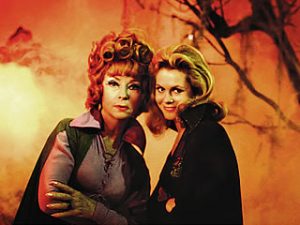 I can, with great clarity, remember the precise moment when everything fell into place: I sit motionless on the couch, staring at the TV, images flickering before my glazed but pensive adolescent eyes. Bewitched is on, and I’m left alone in the dark basement, sheltered and away from the homophobia and hate shouted at me all day in school. I’m in a sort of meditative state — receptive to what I’m watching, laughing on cue, performing my role as the audience but understanding only the face value. Something snaps, and I think, “Why should she have to hide a part of herself to fit in?” And then there comes this single, beautiful, intimate moment. My eyes water, my nostrils flare, and I breathe out a sigh as I begin to smile. Samantha is me.
I can, with great clarity, remember the precise moment when everything fell into place: I sit motionless on the couch, staring at the TV, images flickering before my glazed but pensive adolescent eyes. Bewitched is on, and I’m left alone in the dark basement, sheltered and away from the homophobia and hate shouted at me all day in school. I’m in a sort of meditative state — receptive to what I’m watching, laughing on cue, performing my role as the audience but understanding only the face value. Something snaps, and I think, “Why should she have to hide a part of herself to fit in?” And then there comes this single, beautiful, intimate moment. My eyes water, my nostrils flare, and I breathe out a sigh as I begin to smile. Samantha is me.
In the mid to late 90s, when I did come to realize that some of the awful things screamed at me in school were more-or-less accurate, when my feeling of isolation was affirmed by my lack of friends, my media choices became increasingly flamboyant and gay friendly. Musically, I listened to “One More Round, Girls” and “From a Distance” both by Bette Midler, and “Coat of Many Colors” by Dolly Parton. The Craft, Hocus Pocus, Mrs. Doubtfire, and Sister Act were among my favorite films, and my Television selections drifted more toward shows with overt homosocial or homoerotic situations, many of which I watched in embarrassed secrecy like The Golden Girls, Oz, Buffy the Vampire Slayer, and most notably Xena: Warrior Princess.
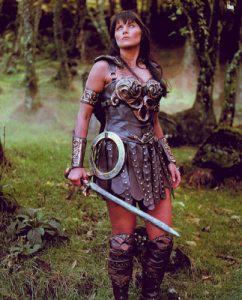 Xena was then and still today my favorite Television series, and I think that’s as much to do with the content as to the nostalgic and reaffirming value it had in shaping my childhood. While the majority of the people in my interviews were busy with shows like Beavis & Butthead, Ren & Stimpy, California Dreams, Beverly Hills, 90210, and Hang Time, I was watching a leather-clad Lucy Lawless do battle with a series of villains by actors most studios would have cast as good guys, the chief nemesis a beautiful, skinny blonde named Callisto.
Xena was then and still today my favorite Television series, and I think that’s as much to do with the content as to the nostalgic and reaffirming value it had in shaping my childhood. While the majority of the people in my interviews were busy with shows like Beavis & Butthead, Ren & Stimpy, California Dreams, Beverly Hills, 90210, and Hang Time, I was watching a leather-clad Lucy Lawless do battle with a series of villains by actors most studios would have cast as good guys, the chief nemesis a beautiful, skinny blonde named Callisto.
Xena, a spinoff of the series Hercules The Legendary Journeys, quickly became its foil engaging in a subversive revision of both its parent series and Greek mythology by positioning Xena as the real hero in mythologies that favored male figures. We learned that the actual protagonist behind such tales as The Iliad,7 the story of David and Goliath,8 and the overthrow of Julius Caesar 9was Xena herself, a powerful, mortal woman whose strength and skills were all her own, not bestowed upon her by a higher power like in Buffy or Charmed.
But, most importantly, even though I might not have understood what it meant then, what interested me most about Xena, was the personal relationship she had with her traveling sidekick, Gabrielle. While most GLBT content on Television at that time employed gay characters as comic relief or used their sexuality as the primary focus for their character development, Xena explored the intimate relationship between two women that was developed emotionally rather than physically, demonstrating that queerness isn’t just about who you’re sleeping with — it’s just as devoted and beautiful and real as any heterosexual pairing. Grasping this concept for the first time in my life, I became increasingly more comfortable with what was being understood peripherally as sexual deviance. Reading Xena as a queer character, I was able to come to terms with my sexuality in a way I never could have before, and finally, I was able to self-identify as gay. She became essential to the creation of my identity and the understanding of my gender in a way I was not gleaning from my parents, my classmates, my teachers, or my coaches. She became my friend, and through her, I was able to experience vicarious bliss and strength.
In an article about queerness, Alexander Doty discusses how “feminine homosexual” men identify cross-gender with empowered females to offer them a space to “express a range of erotic desire” and often do so because they, either from personal choice or through “straight imperatives,” think of themselves as “not men” and by extension as being like “women.”10 For me, this unusual feeling of androgyny, as a “Lonely Little In-Between,” became a characteristic I learned to adopt to explain away all the mannerisms and gestures I had that were more feminine than even my sisters. Xena was often the perfect outlet to normalize these feelings as the women were always the stronger characters and the men were always, always ultimately emasculated by the Warrior Princess, herself an androgynous figure, skirting her own femininity with what was consistently described as “the strength of ten men.”
All of the gay subjects I interviewed said they formed a bond with at least one female character with whom they identified, or more accurately, wanted to identify. Whether it was Xena, Clarissa, Angelica from Rugrats, or even Diana Prince, Wonder Woman’s alter-ego, our own individual associations came to define who we would become, came to teach us about our own sexuality and the people we knew ourselves to be, and gave us agency to define our gender and sexuality in the way most suitable for us. We had no close homosexual relatives, we had no access to gay resources, and if gay-friendly hotlines existed we had no way of knowing about them (as such commercials tended to not reach smaller communities). What we did have was Television, characters to love, characters to form bonds with, and characters to identify as queer. Even if the series we favored weren’t overtly queer, they offered spaces in their plot lines and character devices that we were able to identify as different from our heteronormative environment, not allotted to us in real-life or by any practical means in school or at home. Though most people dismiss such queer perspectives as “reading too much into things,” this assertion is dangerous, because it is precisely this capability that gives rural American youth, sheltered from real-world queer people or situations, a space to understand their identities. As Doty argues, “Queer readings aren’t ‘alternative’ readings, wishful or willful misreadings […] they result from the recognition and articulation of the complex range of queerness that has been in popular culture texts and their audiences all along.”11
 Though it has been almost fifteen years since I starting coming to terms with my own sexuality, necessarily with the help of Television, today, even with continual internet globalization bringing rural America to the city, suicide rates in middle America are at an alarming high. As of 2004, suicide for youth living in Western and mountain states remained as high or higher than the 20-year peak of 9.36 suicides per 100,000 youth12, and gay and lesbian youth were three times more likely to attempt suicide than any other group, with gay males being the most likely to succeed.13 Every single gay individual I interviewed, myself included, had seriously considered or attempted suicide when they felt they had no place to turn. Critics of the new “It Gets Better” project argue that the videos are dangerous, privileging white, middle class gay Americans while ignoring the very real problem of bullying.14 But these criticisms themselves are dangerous, because they celebrate only youth-oriented resistance, like gay-straight alliances that simply do not exist for the struggling rural gay youth in places like Kansas, Wyoming, or Alaska. And even though our media, Television in particular, is as open-minded and exploratory as ever, rural youth continue to depend on queer readings to understand their identities. Remembering back on my childhood, when the time comes for my child to ask me about understanding who they are or if what they’re feeling is normal, I’ll be pull out my thirty-year-old Easy Bake Oven, some vintage brownie powder, and the baking power of a lightbulb with a little bit of sass, because, for me, that’s all it’ll take.
Though it has been almost fifteen years since I starting coming to terms with my own sexuality, necessarily with the help of Television, today, even with continual internet globalization bringing rural America to the city, suicide rates in middle America are at an alarming high. As of 2004, suicide for youth living in Western and mountain states remained as high or higher than the 20-year peak of 9.36 suicides per 100,000 youth12, and gay and lesbian youth were three times more likely to attempt suicide than any other group, with gay males being the most likely to succeed.13 Every single gay individual I interviewed, myself included, had seriously considered or attempted suicide when they felt they had no place to turn. Critics of the new “It Gets Better” project argue that the videos are dangerous, privileging white, middle class gay Americans while ignoring the very real problem of bullying.14 But these criticisms themselves are dangerous, because they celebrate only youth-oriented resistance, like gay-straight alliances that simply do not exist for the struggling rural gay youth in places like Kansas, Wyoming, or Alaska. And even though our media, Television in particular, is as open-minded and exploratory as ever, rural youth continue to depend on queer readings to understand their identities. Remembering back on my childhood, when the time comes for my child to ask me about understanding who they are or if what they’re feeling is normal, I’ll be pull out my thirty-year-old Easy Bake Oven, some vintage brownie powder, and the baking power of a lightbulb with a little bit of sass, because, for me, that’s all it’ll take.
——–
Notes & References:
1 Di Prima, Dianne. Recollections of My Life as a Woman. New York: Penguin, 2001. 3. Print.
2 Kearney, Mary Celeste. “Coalescing: The Development of Girls’ Studies.” NWSA Journal 21.1 (Spring 2009): 1. Print.
3 Gray, Mary L. Introduction. In Your Face: Stories From the Lives of Queer Youth. By Gray. Binghamton, New York: The Haworth Press, Inc., 1999. xiii. Google Books. Web. 15 Oct. 2010.
4 Spigel, Lynn, and Henry Jenkins. “Same Bat Channel, Different Bat Times: Mass Culture and Popular Memory.” The Many Lives of the Batman. Ed. Roberta E. Pearson and William Uricchio. New York: Routledge, Chapman and Hall, Inc., 1991. 117-119. Print.
5 Silber, Sherman J, M.D. “Information about Dr. Sherman Silber, World-Renowned Infertility Treatment Specialist.” The Infertility Center of St. Louis. St. Luke’s Hospital, 2010. Web. 24 Oct. 2010. <http://www.infertile.com/ closlook/biograph.htm>.
6 Luckett, Moya. “Girl Watchers: Patty Duke and Teen TV.” The Revolution Wasn’t Televised: Sixties Television and Social Conflict. Ed. Lynn Spigel and Michael Curtin. New York: Routledge, 1997. 99. Print.
7 Scott, T.J., dir. “Beware Greeks Bearing Gifts.” Xena: Warrior Princess. Syndication. 15 Jan. 1996. Television.
8 Jones, Gary, dir. “The Giant Killer.” Xena: Warrior Princess. Syndication. 14 Oct. 1996. Television.
9 Girotti, Ken, dir. “The Ides of March.” Xena: Warrior Princess. Syndication. 15 May 1999. Television.
10 Doty, Alexander. “There’s Something Queer Here.” Making Things Perfectly Queer: Interpreting Mass Culture. Minneapolis, MN: University of Minnesota Press, 1997. 4, 6. Print.
11 Doty, Alexander. “There’s Something Queer Here.” Making Things Perfectly Queer: Interpreting Mass Culture. Minneapolis, MN: University of Minnesota Press, 1997. 16. Print.
12 “Preventing Youth Suicide in Rural America: Recommendations to States.” Suicide Prevention Resource Center. EDC’s Health and Human Development Division , Apr. 2008. Web. 19 Oct. 2010.
13 “Youth Suicide Frequently Asked Questions (FAQ).” Youth Suicide Prevention Program. N.p., 2010. Web. 10 Oct. 2010.
14 Doyle, Sady. “Does ‘It Gets Better’ Make Life Better for Gay Teens?” Editorial. The Atlantic. THE ATLANTIC MONTHLY GROUP, 7 Oct. 2010. Web. 7 Oct. 2010.

